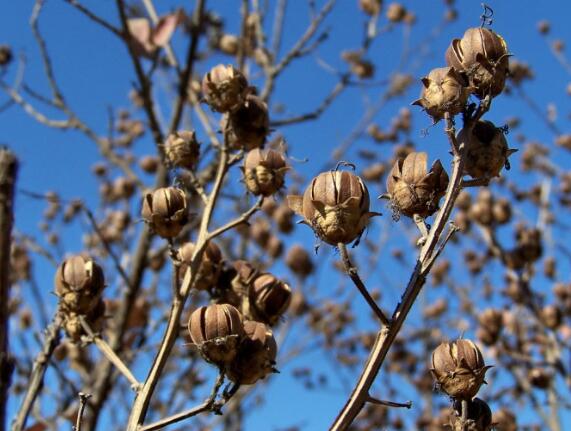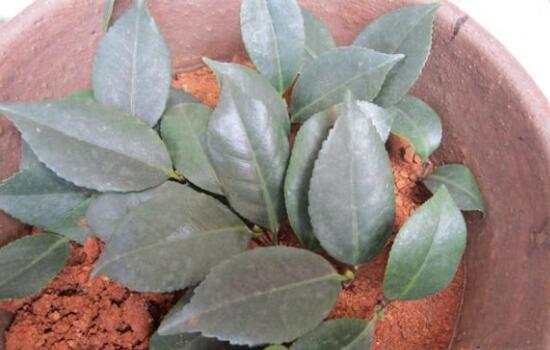How to breed lilac flowers, lilac flower propagation method/sowing, cutting, layering
Lilac is a kind of well-known flower, which has high ornamental value, and it is cultivated in every region of our country, so how to reproduce lilac has become an issue that people are more concerned about. What are the breeding methods of lilac? Next, the editor will take you to learn about it.
How to reproduce lilacs

About how to reproduce cloves, in fact, there are roughly three methods, namely, sowing propagation, cutting propagation and striping propagation. As long as the method is right, the success rate is still very high. In the following, there are detailed explanations of the breeding methods of these three kinds of lilac flowers. You can learn about it.
2. Propagation methods of clove flowers
1. Sowing and reproduction
A: soil selection
In the sowing of lilac, the choice of soil is very important, generally it is best to choose more fertile sandy soil, this kind of soil drainage is better, can make lilac better absorb nutrients, can greatly improve the survival rate.
B: sowing method
Among the breeding methods of lilac, sowing and reproduction is the most commonly used method. First of all, we need to flatten the potted soil and evenly sow the seeds of lilac on the soil, then the soil covered with 2cm can be watered. When watering, it is best to water thoroughly once, so that the sowing is basically completed. Generally, seedlings can emerge after half a month.
two。 Cuttage propagation
A: select cuttings
In cutting propagation, the selection of cuttings is very important, it is best to choose strong branches for cutting, so the survival rate will be relatively high, if you choose weaker branches, it is generally difficult to survive, we need to pay attention to this.
B: cutting method
When cutting, first of all, we need to insert a hole in the soil with chopsticks, flatten the soil by inserting the cuttings into the hole, and then water it. Generally, it can take root about a month after the cuttage is completed, and then carry on the follow-up maintenance.
3. Striping propagation
Striping propagation is a less commonly used method of lilac reproduction, but as long as the method is correct, the survival rate is still very high. When carrying out striping propagation, we should first draw a knife at the lower pressure of the branch, and then press it into the soil. After that, it can be watered thoroughly, and generally it can take root in about 2-3 months.
How to propagate cloves, cutting, sowing and grafting
How to propagate cloves 1. Methods of cutting propagation
Clove cutting time can be carried out in July and August every year, cutting propagation can be used tender wood cutting and hardwood cutting, first of all, we should select the sturdy branches of the current year, cut into 15cm cuttings, insert into the pre-prepared seedbed, and proper shade, keep moist, take root for about 50 days. If the cuttings were quickly treated with 500 μ g / g indolebutyric acid before cutting, the rooting rate of cuttings could reach more than 80%. After the cuttings survived, they were transplanted in the spring of the following year. Hardwood cuttings should be harvested in autumn, stored in open sand, and inserted into the seedbed in the next spring.
2. Sowing and propagation methods
The sowing time of clove flowers is generally carried out in spring, in addition, before sowing in spring, soak the seeds in clean water for 1-2 days, or soak the seeds in 40-50 ℃ warm water for 2 hours, then mix sand (1 seed and 2 parts of sand) to accelerate germination and keep it moist. After about 1 week (early April), it can be sowed on the seedling bed. After sowing, the seedlings can be unearthed after sowing with lcm, which is often kept moist. After being unearthed, there should be time seedlings, ploughing, weeding, watering and fertilization, and they can be planted in the next spring.
3. The method of striping propagation
The propagation time of lilac striping is more appropriate in February every year. First, the root branches of cloves are pressed into the soil, and if the root branches are too thick, they can be scratched and then pressed. Keep the soil moist after pressing, it can take root in 2 to 3 months, and the mother plant can be isolated in autumn and planted separately.
4. the method of grafting propagation.
Clove grafting can be divided into buds or branches, bud grafting can be carried out in July, and branch grafting should be carried out before germination in early spring. The rootstocks used for grafting are privet, water wax, tassel, cloves and so on. Privet rootstocks sprout easily and should be cut off at any time, otherwise they will still be privet rather than cloves after a few years.
5. The method of ramet propagation
The ramet propagation time of cloves is usually carried out before sprouting in early spring or after defoliation in autumn. The sprouting seedlings in the rhizosphere of clove plants are dug up with roots, planted separately, or the whole stump plants are dug out and planted in clusters. The ramets should be pseudo-planted in autumn and transplanted in the next spring. Prune the branches on the ground properly before planting.
How to grow lilacs? How do lilacs reproduce? Speaking of lilac flowers, we are no stranger, it is a common kind of flowers and trees, light color, fragrant smell, often planted in the courtyard. This article focuses on introducing the breeding methods and maintenance methods of lilac flowers for reference and learning. Clove is usually propagated by cutting, the specific method is as follows: the cuttage of clove is to take 1-2-year-old strong branches as cuttings and insert them directly into the hotbed to make them take root and sprout and form new plants. Usually, the top branch is cut one month after the spring flower fade for cutting. the length of the cuttage is 10 cm to 15 cm, with 2 to 3 pairs of bud nodes, one of which is buried in the soil. Under the condition of 25 ℃, it takes root in 30 to 40 days. When the young root changes from white to yellowish brown, begin to transplant seedlings. 1. The grafting method is generally carried out before germination in early spring. The length of the scion is 8 cm to 10 cm, with 2 pairs of bud nodes, and the lower sides of the scion are cut into a bevel. The rootstock selects the 2012 clove seedlings, cut off the top at 5 cm to 10 cm from the ground, split a gap vertically down from the cross section of the rootstock, and then insert the scion. The slant of the scion should closely match the rootstock and be tied up with plastic strips. In order to prevent the grafting knife edge from losing too much water, you can bury it with moist soil and remove the covered soil after the buds on the scion sprout. 2. Budding is carried out in Beijing and North China, mostly in early August. The full leaf buds on the sturdy branches of the same year should be selected for the scion, and the 1-2-year-old clove seedlings should be selected for rootstocks. When grafting, the leaves on the scion should be cut off, leaving only the petiole, then cut across 1 cm above the bud, and then cut upward from 1 cm to 1.5 cm below the bud, peeling off the xylem in the cortex. Cross-cut the rootstock 5 cm to 10 cm from the ground, then cut a vertical knife about 3 cm long from the middle of the cut to make it in a "T" shape, then gently peel off the skin and insert the scion into the "T" mouth. The scion and the rootstock should be closely matched, and finally tied with plastic film strips. 2 to 3 weeks after budding, if the petiole on the scion falls off naturally, the bud has survived, and the plastic strip can be removed at this time. 3. The grafting method is to cut a joint of the same size between the clove scion and the rootstock, and tie them closely together. When the knife edge produces callus, cut off the top branch of the rootstock 1 cm above the interface and the scion 1 cm below the interface to make it a new plant. In addition, cloves can also be sown, pressed and cultured. The excellent varieties of cloves can also be raised by stem tip tissue culture. Clove conservation points and points for attention: 1, lilac like tropical island climate, the climate characteristics of the original area belongs to the equatorial rain forest climate, the lowest monthly average temperature is 21 ℃. 2. When the extreme low temperature reaches 3 ℃, it can lead to the death of clove plants. 3. Neutral soil should be selected for lilac culture, acid soil should be avoided, waterlogging and damp heat should be avoided. 4. Lilac flowers do not like big fat, do not apply too much fertilizer, otherwise it will affect flowering. 5. The main pests of clove are aphids, pocket moths and thorns. It can be sprayed with 80040% dimethoate emulsion or 1000 times 25% imidophos emulsion. Summary: the above is the introduction of the maintenance knowledge of lilac flowers. I hope you can exchange more experience in planting clove flowers.
- Prev

What about crape myrtle flower worms? control of crape myrtle diseases and insect pests / 3 insect pests and 2 diseases
Crape myrtle is a kind of highly ornamental flower, which is planted in many areas of our country, but in the process of crape myrtle culture, if the method is not right, it is easy to appear diseases and insect pests, which we need to prevent and control. What about the crape myrtle flower worm?
- Next

How to propagate camellias, the survival rate of four propagation methods / cutting methods of camellias is 100%.
Camellia, a very beautiful flower, is loved by people for its beautiful shape and rich colors. In life, raising a few pots of camellias at home is the choice of many people, and many of them go to the store to buy them directly. In fact, in addition to buying existing camellias,
Related
- Fuxing push coffee new agricultural production and marketing class: lack of small-scale processing plants
- Jujube rice field leisure farm deep ploughing Yilan for five years to create a space for organic food and play
- Nongyu Farm-A trial of organic papaya for brave women with advanced technology
- Four points for attention in the prevention and control of diseases and insect pests of edible fungi
- How to add nutrient solution to Edible Fungi
- Is there any good way to control edible fungus mites?
- Open Inoculation Technology of Edible Fungi
- Is there any clever way to use fertilizer for edible fungus in winter?
- What agents are used to kill the pathogens of edible fungi in the mushroom shed?
- Rapid drying of Edible Fungi

